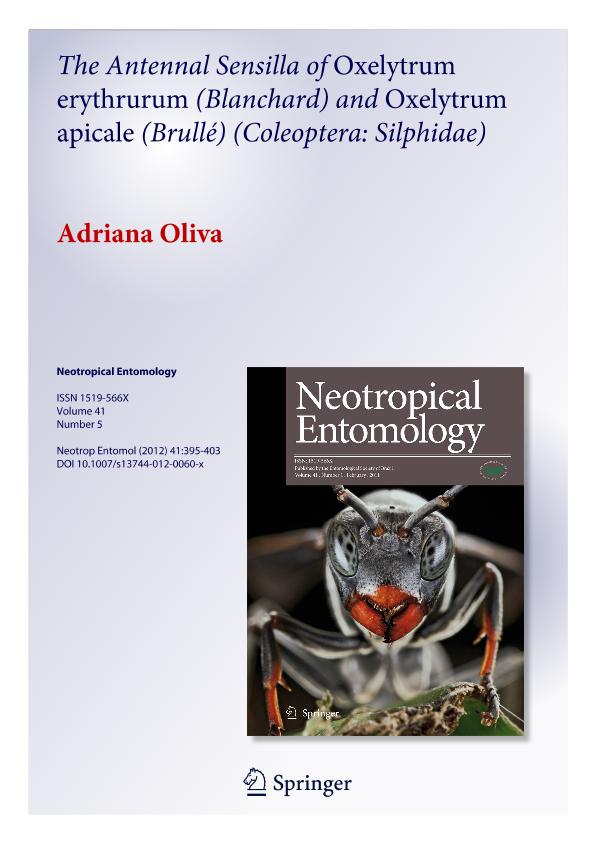Artículo
The Antennal Sensilla of Oxelytrum erythrurum (Blanchard) and Oxelytrum apicale (Brullé) (Coleoptera: Silphidae)
Fecha de publicación:
10/2012
Editorial:
Sociedade Entomológica do Brasil
Revista:
Neotropical Entomology
ISSN:
1678-8052
Idioma:
Inglés
Tipo de recurso:
Artículo publicado
Clasificación temática:
Resumen
The typology and placement of antennal sensilla of the carrion beetles Oxelytrum erythrurum (Blanchard) and Oxelytrum apicalis (Brullé) (Coleoptera: Silphidae) were studied using scanning electron microscopy. Two types of sensilla chaetica, two types of sensilla trichodea, four types of sensilla basiconica, one type of sensilla coeloconica, and an unidentified type of sensillum were found in both species. Sensilla chaetica type 1 are found on the antennomeres proximal to antennal club (A1-A8); chaetica type 2 are found on the club (A9-A11). Sensilla trichodea are found on A9-A11; one type (T1) is found on the proximal portion of the club, the other type (T2) on the apical portion. Basiconica type 1 are found on the dorsal surface of A9-A11; they are much denser on the apical portion of the antennal club than on the proximal. In O. erythrurum, a nocturnal species of the Chaco-Pampean plain, T2 two are found on A10 and A11. In Oxelytrum apicale, a mountain species, probably diurnal, only A11 bears T2, but they are denser than in the other species. It is suggested that O. apicale depends more on contact chemoreception than O. erythrurum. The ventral surface of the antennal clubs shows no remarkable difference between species. © 2012 Sociedade Entomológica do Brasil.
Palabras clave:
Corpse Succession
,
Neotropical Fauna
,
Olfaction
,
Sarcosaprophages
Archivos asociados
Licencia
Identificadores
Colecciones
Articulos(MACNBR)
Articulos de MUSEO ARG.DE CS.NAT "BERNARDINO RIVADAVIA"
Articulos de MUSEO ARG.DE CS.NAT "BERNARDINO RIVADAVIA"
Citación
Oliva, Adriana; The Antennal Sensilla of Oxelytrum erythrurum (Blanchard) and Oxelytrum apicale (Brullé) (Coleoptera: Silphidae); Sociedade Entomológica do Brasil; Neotropical Entomology; 41; 5; 10-2012; 395-403
Compartir
Altmétricas




